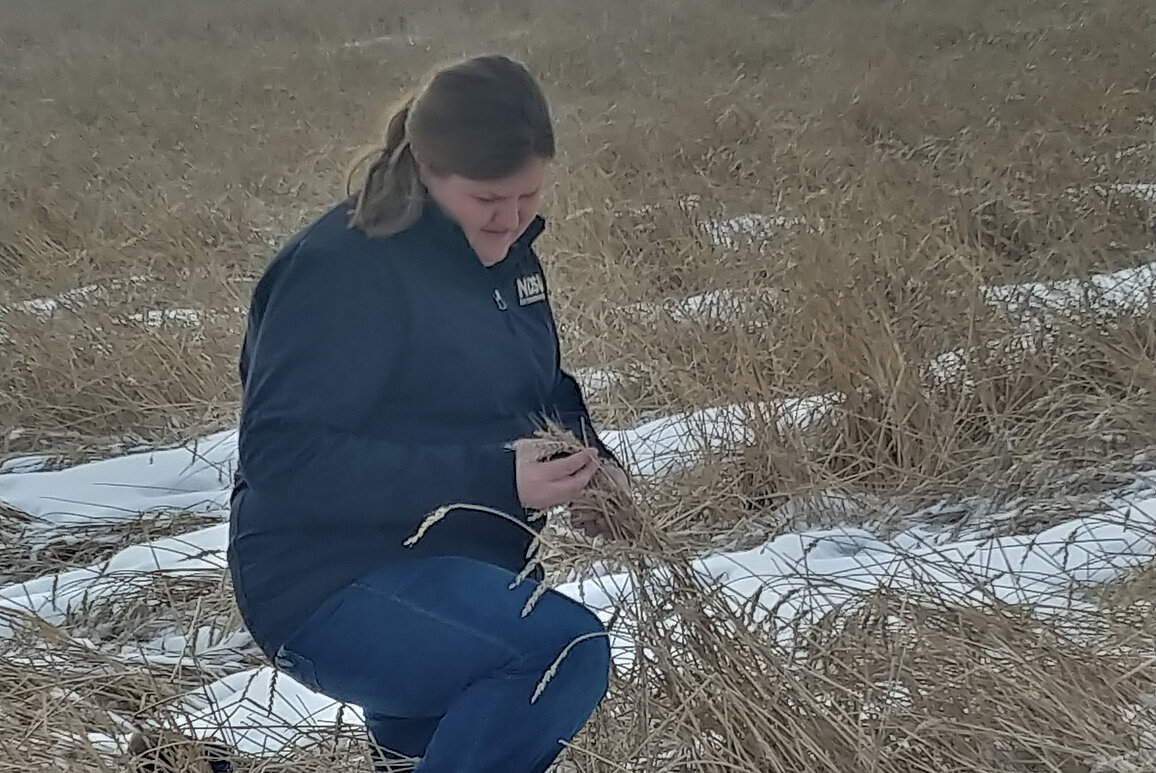NDSU Extension Focuses on 2019’s Ag Challenges

A wet spring that led to late planting. Low commodity prices and trade wars. Fall rain and snow that hampered harvest. Feed shortages for the winter.
In 2019, North Dakota farmers were hit by multiple whammies, and NDSU Extension staff are doing what they can to help.
Miranda Meehan, livestock environmental stewardship specialist, leads biweekly calls for state agencies and organizations. These include the USDA Farm Service Agency (FSA), state departments of Agriculture and Emergency Services, commodity groups and congressional offices.
“These calls enable agencies and organizations across the state to coordinate efforts and respond more effectively to the needs of farmers and ranchers,” Meehan says. “Discussions during these calls have led to NDSU Extension conducting surveys to assess storm impacts, forage availability and corn status. The information gleaned from these surveys was used in both the secretarial and presidential disaster requests and led to the development of state forage assistance programs.”
Meehan says a key has been county Extension agents, who are boots on the ground to review and assess damage, listen to farmers and ranchers, and share information.
In Ward County, Extension agent Paige Brummond says, “Much of our wheat crop was left unharvested and will be destroyed come spring as it has no value since it would cost more to harvest it than it is worth, plus it would be nearly impossible to harvest after the winter weather conditions.”
Angie Johnson, Extension agent in Steele County, says, “We are looking at 80% to 90% standing corn left out in the fields to be harvested. We are seeing some mold issues develop on the ears. This is a big concern for our livestock producers, as those molds produce mycotoxins that can cause issues if fed to livestock.
“Another quality concern is the low test weights,” she adds. “The standard test weight of corn is 56 pounds per bushel, and I have heard test weights as low as 39 pounds per bushel. At our local elevator, that is a 68-cent-per-bushel discount on a corn market that is already on the low side.”
As many Extension agents did, Johnson worked with her county FSA director and emergency manager to estimate losses from the Oct. 10 snowstorm. They developed a spreadsheet that helped calculate the damage, an estimated $16 million in crop and livestock loss in Steele County. The spreadsheet was used across the state to help assess damage, which led to county and state emergency declarations.
Extension sponsored a public webinar featuring FSA representatives sharing information about government programs available. The recording and additional Extension resources are at www.ag.ndsu.edu/agdisaster.
The challenges are especially stressful when they’re out of producers’ control. Family science specialist Sean Brotherson works with Extension agents and specialists to provide education through the www.ag.ndsu.edu/farmranchstress website, publications, podcasts, programs, news releases and social media.
“Your health is your most important asset as a farmer or rancher,” Brotherson says. “Just like it’s important to maintain your farm equipment so that it doesn’t break down at a critical time, the same is true of your health -- pay attention to any early warning signs.”
With continuing moisture, unknown markets and more challenges, NDSU Extension staff will continue to educate and support North Dakota’s farmers and ranchers.
For more information: Miranda Meehan, 701-231-7683, miranda.meehan@ndsu.edu; Paige Brummund, 701-857-6444, paige.f.brummund@ndsu.edu; Angie Johnson, 701- 524-2253, angela.b.johnson@ndsu.edu; Sean Brotherson, 701-231-6143, sean.brotherson@ndsu.edu


